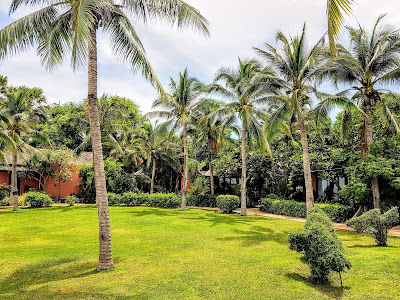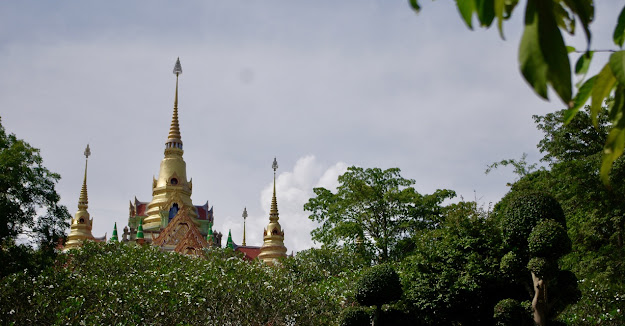ABSTRACT
Due to the latest anthropological discoveries made in North Africa, this text attempts to focus on the early presence of human life in this region of the continent.
It is widely known that Man’s cradle lies in East Africa, particularly along the Rift Valley. Lawrence Dartnell’s book ‘Origins’ clearly links the physical conditions of plate tectonics and volcanic activity to the emergence of human life in this part of the world. Man’s migration out of the continent seems to follow a logical trail northwards. This process occurred either by raft across the Bal-el-Mandeb strait or by walking across the Sinai peninsula. The first waves to Eurasia were made by Homo Erectus as far back as 1.8M years ago. Homo sapiens followed only around 60,000 years ago. In the meantime, Homo Erectus had already widely spread across the African continent. The migrations were caused by a conjunction of plate tectonics, climate changes, overpopulation, and a need for water, food, and greenery for survival. These conditions existed along the Greater Rift Valley both northwards and southwards. But was this also possible across the continent towards the Atlantic? Very few texts evoke the other migratory paths. Yet, as the notion of a potential ‘passage’ remains at the core of such pathways, the existing tropical climate of Africa at the time provides a possible alternative. West of Ethiopia and Sudan there existed a series of lakes and river networks that allowed a pathway towards the Atlantic for both animals and hominids. The Sahara was not yet a desert. The rock art of the Tassili n’Ajjer provides a rich history of the area depicting Men and animals at a period dating back to 10,000 years ago. But the desertification of North Africa soon interrupted the existing conditions. The latest scientific reports confirm a progressive climate change due to new phases in the Earth’s orbit and a tilt to its axis. A phenomenon known as the ‘Milankovitch Cycles’. It happened in two separate episodes. The first was milder and occurred between 6,700- 5,500 years ago. The second was far more brutal, between 4,000 and 3,600 years ago. From then on, the Sahara isolated North Africa from the rest of the continent. Homo Erectus could have moved across the African continent towards the Atlantic coast and North Africa. However, two new anthropological discoveries, one in Morocco and the other in Algeria, have raised new considerations. In 2004, a new dating process reveals that the Jebel Irhoud skulls (Morocco) belonged to the oldest 315,000-year-old primitive H.Sapiens. A second anthropologic bombshell came up in 2018, at Aïn Boucherit (Algeria). A hominid presence, dated from 2.4M years ago, became the second oldest site after that of Gona, found in Ethiopia.
Consequently, without jumping to conclusions yet, it all seems that North Africa may have been another cradle of humanity. Many scientists think now that it can be extended to the whole African continent. Whatsoever, it reveals once more how ancient the history of North Africa has been. Far older than ever thought before. The established idea of a migration coming from the East holds no scientific evidence at this stage. In reality, the question deals more with a local existence born at the very beginnings. Needless to remind though that the real Berber roots date back from the Mesolithic and Neolithic periods, indeed through successive migrations coming from the Levant. It had a clear Mediterranean impact brought by the Capsian culture. Later on, this area became ‘Numidia’.
C.S.
RÉSUMÉ
En fonction des dernières découvertes anthropologiques émanant d’Afrique du Nord, ce texte se propose donc d’évoquer les premières traces de la vie humaine dans cette région du continent.

On admet généralement que les origines de l’Humanité sont issues de l’Afrique de l’Est et plus particulièrement de la vallée du Rift. Le livre de Lawrence Dartnell, intitulé “Origines”, souligne le lien entre le phénomène de la tectonique des plaques et des activités volcaniques avec l’émergence de la vie humaine dans cette partie du monde. La migration de l’Homme hors du continent a suivi un chemin bien connu en direction du nord. Au niveau de l’Égypte, cet épisode s’est effectué soit à bord d‘un radeau pour traverser le détroit de Bab-el-Mandeb, soit à pied à travers la péninsule du Sinaï. Les premiers à avoir pénétré en Eurasie ont été des Homo Erectus, il y 1.8M d’années. L’Homo Sapiens a ensuite suivi, mais il y a seulement 60,000 ans de cela. Entre temps, l’Homo Erectus s’était déjà largement répandu sur tout le continent africain. Les raisons de ces migrations proviennent de facteurs différents: la tectonique des plaques, les changements climatiques, la surpopulation et le besoin d’eau, de nourriture et d’espaces verdoyants nécessaires à la survie. Le couloir du Grand Rift répondait à ces exigences, aussi bien vers le nord, que vers le sud. La question est donc de savoir si cela a également été possible en direction de l’Atlantique. Peu de textes évoquent d’autres chemins migratoires. La notion d’un “passage” potentiel demeure au cœur de ces mouvements de déplacements sociaux. L’existence à cette époque d’un climat tropical humide conforte la probabilité d’une telle alternative. À l’ouest de l’Éthiopie et du Soudan, il y avait alors toute une série de grands lacs et un vaste réseau de fleuves permettant un accès vers l’Atlantique, à la fois pour les animaux et les hominidés. Le Sahara n’était pas encore un désert. L’art rupestre du Tassili n’Ajjer
fournit un vaste éventail historique de cette zone géographique au travers d’images de la faune et du peuplement, il y a 10,000 ans. Malgré tout, la désertification de l’Afrique du Nord a mis fin aux conditions existantes. Les dernières études scientifiques dans ce domaine confirment qu’il y a eu un changement climatique progressif survenu au cours d’une modification de l’orbite terrestre et d’une inclinaison de l’axe de la Terre. Ce phénomène se définit sous l’appellation de “cycles de Milankovic”. Cet évènement s’est produit en deux temps. Le premier a été moins conséquent et s’est produit entre il y a 6,700 et 5,500 ans. Le second a été beaucoup plus brutal, il y a entre 4,000 et 3,600 ans. À partir de ce moment-là, le Sahara a isolé l’Afrique du Nord du reste du continent. L’Homo Erectus avait pu sans doute traverser le continent africain en direction de la côte atlantique et de l’Afrique du Nord. Toutefois, deux découvertes anthropologiques, l’une au Maroc, l’autre en Algérie, ont alors suscité la controverse et la nécessité d’avoir de nouvelles considérations. En 2004, un procédé de datation nouveau révèle que les crânes /du djebel Irhoud, au Maroc, appartiennent à un Homo Sapiens primitif, vieux de 315,000 ans. Puis, en 2018, une seconde découverte faite à partit du site d’Aïn Boucherit, en Algérie, fait l’effet d’une véritable bombe anthropologique. On vient de détecter une présence d’hominidés, datée de 2,4M d’années! Ce champs de fouilles de l’Est algérien devient alors le second plus vieux site anthropologique du monde, après celui de Gona, en Éthiopie.
Ainsi donc, sans vouloir faire de conclusions hâtives, l’Afrique du Nord devient de facto un autre berceau potentiel de l’Humanité. Plusieurs scientifiques pensent aujourd’hui que cela peut s’étendre à tout le continent africain. Quoi qu’il en soit, ces découvertes révèlent l’ancienneté de l’histoire du Nord de l’Afrique. Bien plus ancienne qu’on ne l’avait imaginée. L’idée préalable d’une migration venue de l’Est n’a plus aucun fondement scientifique. À vrai dire, la question d’une origine locale est désormais posée. Rappelons malgré tout à ce stade, que les véritables racines du peuple berbère datent des périodes Mésolithique et Néolithique. La culture capsienne était porteuse d’un héritage méditerranéen indéniable. Cette région est devenue ensuite la Numidie.
C.S.
LIEN / Academia.edu







































